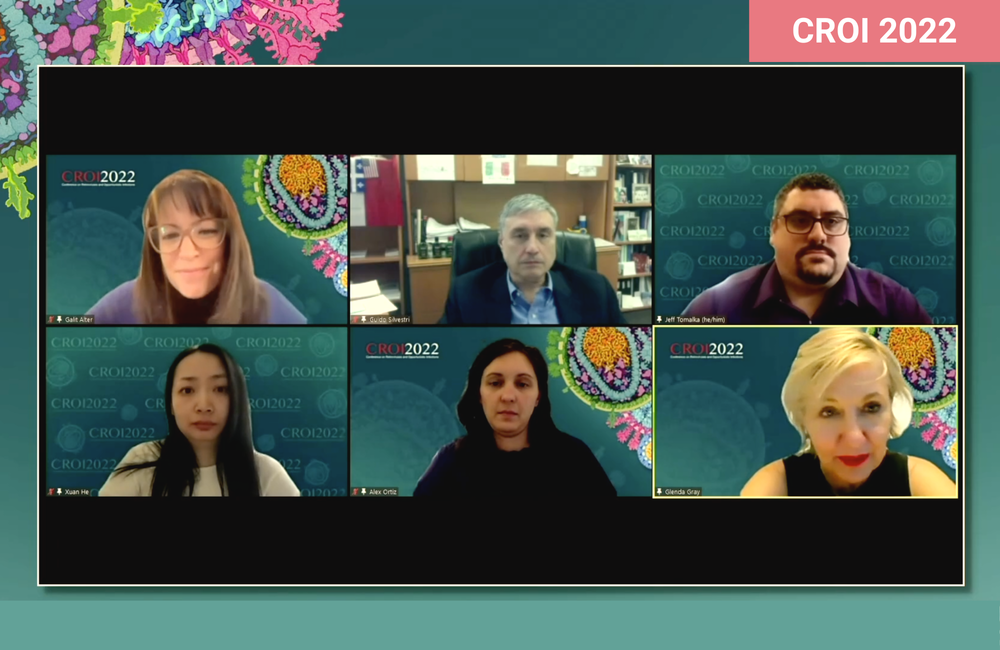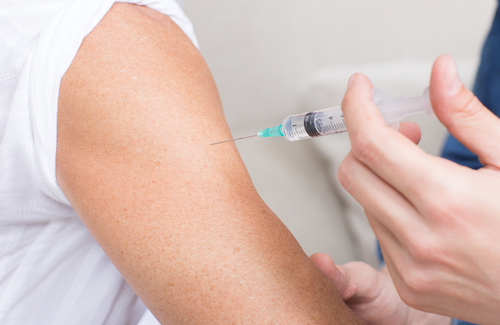
An experimental vaccine regimen tested in a large trial in southern Africa did not protect young women from acquiring HIV, adding to a long string of HIV vaccine disappointments, Dr Glenda Gray of the South African Medical Research Council said last week at the Conference on Retroviruses and Opportunistic Infections (CROI 2022).
But researchers are continuing to analyse data from the trial in the hope of gleaning more information that could aid the ongoing pursuit of a vaccine to prevent HIV. In the meantime, biomedical interventions to reduce the impact of HIV among women in Africa remain urgently needed, Gray emphasised.
In contrast with the rapid development of COVID-19 vaccines, HIV vaccine research is a story of ongoing frustration. Only one vaccine regimen, evaluated in the RV144 trial in Thailand, has shown any effectiveness, reducing new infections by about 30%, researchers reported in 2009. Since then, several trials have evaluated a variety of vaccine candidates designed to stimulate antibody or T-cell immune responses against HIV, but with little success. In February 2020, a study of a vaccine based on the RV144 regimen was halted early after demonstrating no efficacy.
That left just two large HIV vaccine trials underway: Imbokodo and Mosaico. Both evaluated a primer vaccine known as Ad26.Mos4.HIV, which uses an adenovirus type 26 common cold virus vector, similar to the one used in the AstraZeneca and Johnson & Johnson COVID-19 vaccines, to deliver a computer-designed ‘mosaic’ of antigens from multiple HIV strains. In addition, the vaccine regimens in the two studies included different boosters containing HIV envelope proteins.
Early studies showed that this type of vaccine combination induced strong antibody and T-cell responses and protected monkeys exposed to SIV, HIV's simian cousin. However, the vaccines did not stimulate production of broadly neutralising antibodies (bNAbs) that disable multiple HIV variants.
The phase IIb Imbokodo trial (HVTN 705), started in 2017, recruited more than 2600 young women ages 18 to 35 at high risk for HIV in Malawi, Mozambique, South Africa, Zambia and Zimbabwe. The median age was approximately 22 years. A majority of the women reported one or two sex partners during the previous month, but 18% reported five or more. About 70% had an older sex partner and a third said their spouse or main partner had other partners. Nearly half had exchanged sex for money or gifts in the past month. About 70% said they used condoms sometimes and 18% said they never did. Almost a third had a sexually transmitted infection at study entry.
Study participants were randomly assigned to receive four doses of the Ad26.Mos4.HIV vaccine or placebo injections over the course of a year. At the third and fourth visits, those in the vaccine group also received boosters containing gp140 proteins from HIV Clade C, the predominant type in southern Africa. The women were also offered free oral pre-exposure prophylaxis (PrEP), but hardly any had tenofovir levels reflecting consistent use.
As aidsmap.com previously reported, the trial was stopped ahead of schedule in August 2021 after the primary analysis showed that vaccine effectiveness was 25.2%. Public health experts say a vaccine would need to reach at least 50% efficacy to curb the pandemic.
Two years after the first dose was administered, 51 study volunteers who received the active vaccine and 63 who received placebo injections acquired HIV (3.6 vs 4.3 cases per 100 person-years, respectively). The difference was not statistically significant, meaning it could have been attributable to chance.
The vaccine regimen had a favourable safety profile with no serious adverse events. The most common side effect was injection site pain or tenderness, which occurred more often in the vaccine group. Gray noted that no case of thrombosis with thrombocytopenia syndrome – the blood clotting side effect rarely seen in recipients of Ad26 COVID-19 vaccines – were reported.
Presenting additional data at CROI, Gray noted that the vaccine did not significantly reduce HIV acquisition in any age group. However, there was a hint of greater effectiveness for older women. Among those ages 31 to 35, there were three new cases in the vaccine group compared with eight in the placebo group, but these numbers are too small to draw firm conclusions.
Further analysis of the Imbokodo data is ongoing, and researchers hope it will shed new light on immunological correlates, or factors that enhance protection against HIV, Gray said.
The parallel Mosaico trial (HVTN 706), which is testing a similar vaccine regimen in nearly 4000 gay and bisexual men and transgender women in North and South America and Europe, is still underway. Mosaico, started in 2019, also uses the Ad26.Mos4.HIV primer vaccine, but its booster includes a mix of envelope proteins from a variety of HIV types predominant in different regions or the world, not just Clade C.
This optimised protein boost “may enhance vaccine efficacy,” Gray suggested. What’s more, Mosaico – a phase III study – is “better powered” to detect small differences in vaccine effectiveness. “If Mosaico shows good efficacy, I think we’ll have to bring it back to South Africa to test the new boost,” she said.
But some experts think more sophisticated approaches will be needed. Imbokodo and Mosaico are likely to be among the last studies of experimental vaccines that elicit non-neutralising antibodies, as a growing number of experts believe broadly neutralising antibodies are key to preventing HIV. Researchers are exploring a variety of novel approaches, some of which use the messenger RNA (mRNA) technology successfully employed in the Pfizer-BioNTech and Moderna COVID-19 vaccines.
While these new approaches make their way through the pipeline, women in southern Africa – a population at high risk for HIV – urgently need other biomedical prevention tools, such as long-acting injectable PrEP, vaginal rings and potentially implants that could prevent both HIV acquisition and pregnancy.
“We haven’t turned the needle on HIV in Africa in two decades,” Gray said. She noted that HIV risk is higher for African women than for gay and bisexual men in high-income countries, who have widely adopted other prevention methods. A combination of vaccines, PrEP, long-acting antiretrovirals to lower viral load in people living with HIV and other tools might be needed to overcome the HIV epidemic in Africa.
“We need a vaccine that will overcome high rates of infection,” she said. “To lower community transmission, we need a combination approach.”
Gray GE et al. Phase IIb efficacy trial of mosaic HIV-1 vaccine regimen in African women: Imbokodo. Conference on Retroviruses and Opportunistic Infections, abstract 121, 2022.
View the abstract on the conference website.

